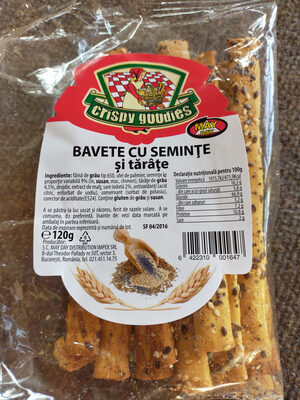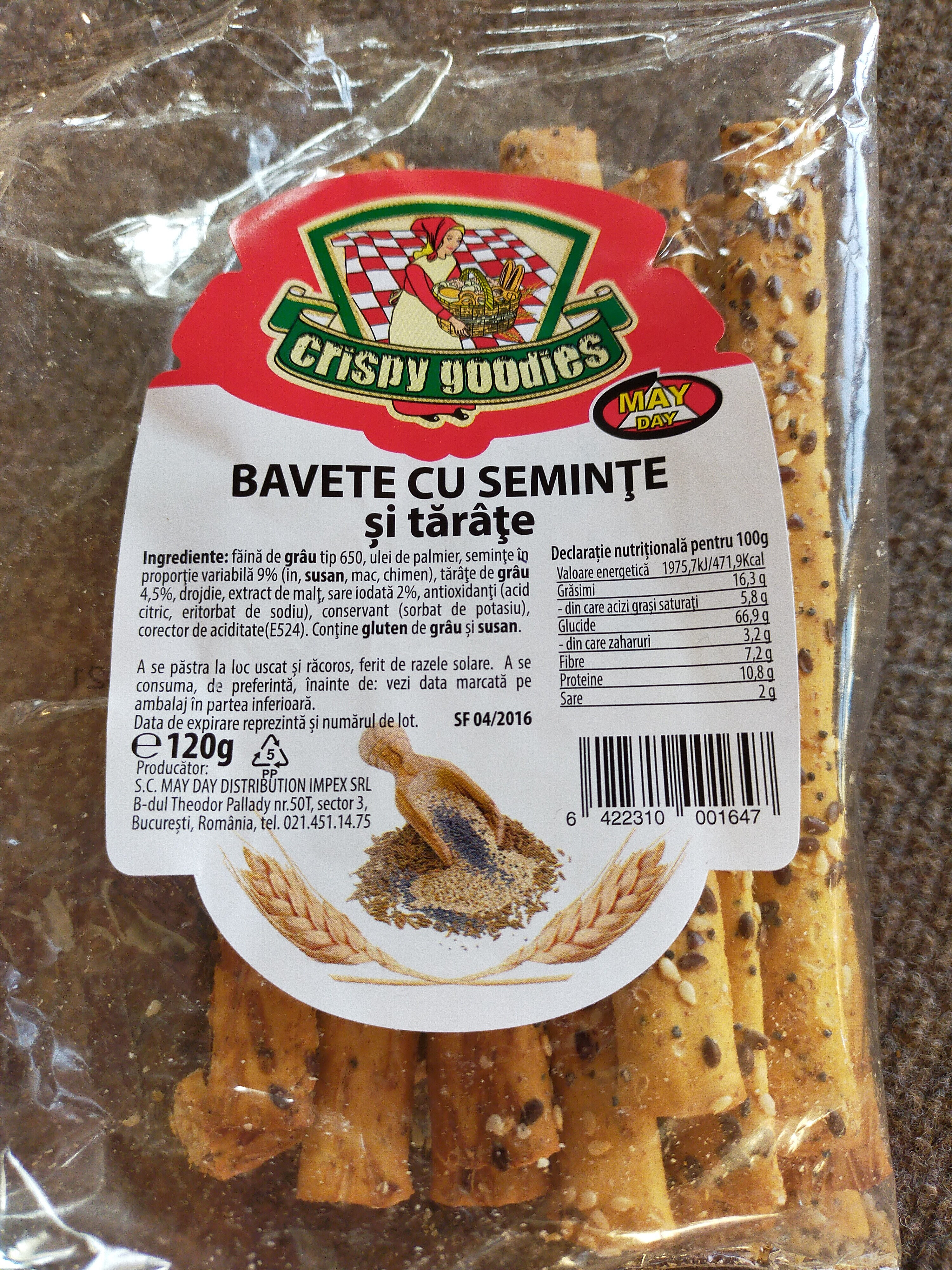bavete cu semințe și tărâțe - crispy goodies - 120 g
This product page is not complete. You can help to complete it by editing it and adding more data from the photos we have, or by taking more photos using the app for Android or iPhone/iPad. Thank you!
×
Barcode: 6422310001647 (EAN / EAN-13)
Quantity: 120 g
Packaging: Plastic
Brands: crispy goodies
Categories: Baby foods, Snacks and desserts for babies
Origin of ingredients: Romania
Manufacturing or processing places: Romania, București
Traceability code: SF 04/2016
Stores: Lidl
Countries where sold: Romania
Matching with your preferences
Health
Ingredients
Food processing
Additives
Ingredients analysis
The analysis is based solely on the ingredients listed and does not take into account processing methods.
Nutrition
Serving size:
100g
Environment
Packaging
Transportation
Threatened species
Report a problem
Data sources
Product added on by openfoodfacts-contributors
Last edit of product page on by packbot.
Product page also edited by off.10891b20-6c78-4523-b4ab-40e7ffacfb2e.
If the data is incomplete or incorrect, you can complete or correct it by editing this page.




